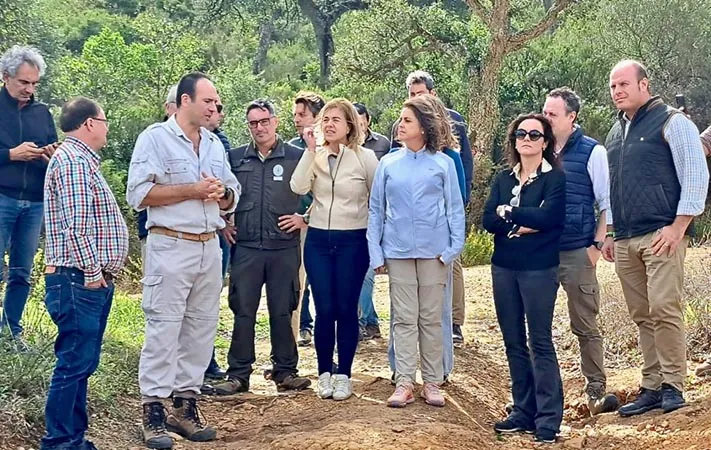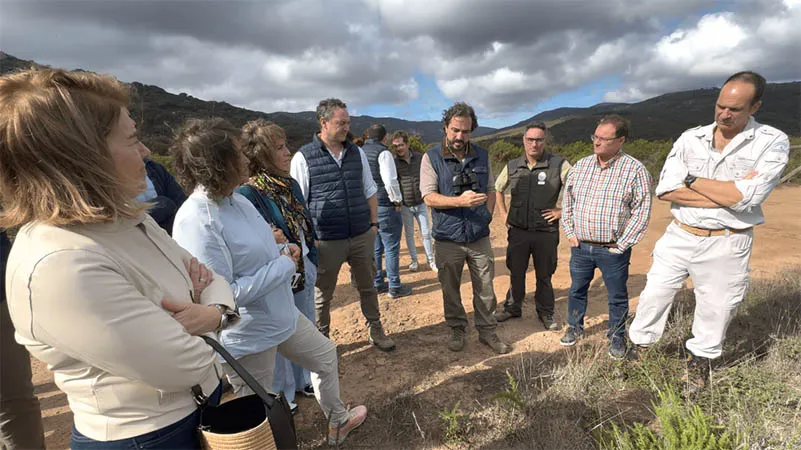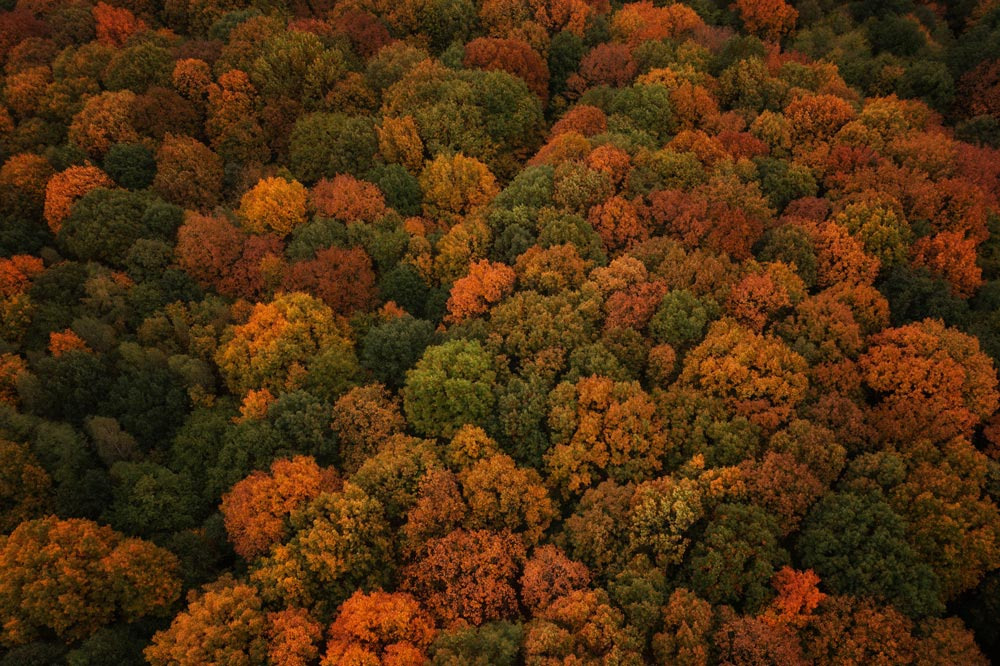
The Director of CINEA, the European Climate, Environment and Infrastructure Executive Agency visits LIFE CO2RK This visit by the head of the EU's environmental research arm is a clear endorsement of the project and its potential for Climate Change Mitigation through public-private collaboration.
The Director of the European Climate, Environment and Infrastructure Executive Agency visits LIFE CO2RK
Paloma Aba Garrote, Director of the CINEA Agency, is ultimately responsible for the main EU research (Horizon Europe) and applied research (LIFE) programs.

During her visit to the Los Alcornocales National Park to learn about CO2RK, she was accompanied by the leadership of the Regional Ministry of Sustainability and Environment of the Andalusian Regional Government, led by the Regional Minister Catalina García, the Deputy Regional Minister Sergio Arjona, Technical General Secretary María López, Director General of Forest Policy Juan Manuel Verdugo, and the Manager of the AMAYA Agency Javier de Torre.
The host was Juan Manuel Fornell, Director of the LIFE CO2RK Project and the Los Alcornocales Natural Park, who, along with project partners such as the University of Córdoba, the companies IDAF and YUNTAS, and the Marche Region of Italy, explained the objectives and progress of CO2RK.
Genesis of LIFE CO2RK: the role of the Los Alcornocales Natural Park technicians
Juan Manuel Fornell (NP Director) and Rafael Sánchez (manager of Public Forests in the NP) explained the origin of the project, years ago, in the search for solutions to the regression of the cork oak forest as a productive forest and biodiverse habitat, which is affected not only by pests such as “the Drought”, but also by changes in production models that in the medium term can put an end to these forest formations.
Cork farming remains highly profitable, possibly the most profitable of all forestry operations in southern Europe. New managers are increasingly opting for hunting operations because they are easily outsourced and generate more regular income—every year rather than every 9-10 years, even though the profit is much lower.
The problem is that over-hunting and less dedication to caring for productive cork oak forests are preventing regeneration: there are hardly any young trees, because deer and fallow deer eat the trees that are born each year, and facilitate the transmission of fungi such as “Phytophtora” (responsible for “the Drought”). In fact, there are farms that have lost up to 80% of their cork oaks in the last 20 years.
Emissions offsetting is a tool, not an end, to facilitate a return to cork farming, which has proven to be not only more profitable but also compatible with hunting and livestock farming when these do not exceed the thresholds traditionally assigned to them.
Visit to the Valdeinfierno Public Forests

In the image, from left: Lorenzo Federiconi (Marche Region), Juan Manuel Fornell (Director of the Alcornocales National Park and LIFE CO2RK), Rafael Sánchez Vela (Forestry Engineer of the Alcornocales Natural Park), Juan Carlos Gil (Environmental Agent in Alcornocales Natural Park), Miguel Gil (YUNTAS), Paloma Aba (Director of CINEA), Catalina García (Ministry of Environment in the Regional Government of Andalusia), María López (Regional Government General Secretary of Environment and Climate Change), Juan Ramón Pérez Valenzuela (General Director of Forestry Policy) and Óscar Curtido (Territorial Delegate in Cádiz of the Regional Government).
Pilot plots
Guillermo Palacios, senior researcher at the University of Córdoba, explained the work currently underway, analyzing the CO2 absorption capacity of paired pilot plots:
a) In a plot representative of oien of the six types of cork oak forests found in Spain and Portugal, the additional Carbon sequestration achieved with innovative forest management (based on traditional uses and techniques that have been abandoned in some areas) is under analysis. This is “carbon forestry,” focused on fixing the maximum amount of organic carbon in the soil, thus enhancing the fertility of farms and promoting the recovery of healthy cork oak forests with densities like those of the past.
b) In a neighbouring plot, the sequestration achieved without applying these special Carbon forestry management is being compared to determine the “additionality” provided by Carbon forestry. Apparently healthy farms lack young cork oak trees and are not only more vulnerable to “La Seca” (the drought), but also have their economic profitability—and ecological balance—seriously compromised.
Carbon Silviculture
Miguel Ángel Lara (IDAF) explained the keys to this forest management system, which aims to maximize CO2 sequestration so that farms or nodal agencies that adopt it can attract investment from companies seeking to offset their emissions. These techniques are aimed at promoting the recovery of cork oak forests, the number of cork oak trees on each farm, and restoring cork exploitation to a balance with other sustainable uses (livestock farming, hunting).
The profitability of cork oak forests will increase in the medium term, and offset investments will help financially sustain restoration efforts in the short term.
The European dimension of CO2RK
Miguel Gil (YUNTAS) explained to the attendees that the design of LIFE CO2RK is focused on facilitating its implementation in any European region, and in fact, it has received interest from regions in Germany and Finland. Fundamental to this is the concept of CO2 sequestration in slow-growing forests, not only through the planting of new trees, but also through the enhancement of forest management (pruning, felling, clearing, and cork harvesting) necessary for the profitable and sustainable exploitation of these forests. These practices can be improved to maximize CO2 sequestration and attract investment through offsets.
Slow-growing forests compensate for this slowness in tree development with a much richer biodiversity than conifer plantations, and this floral biodiversity, composed of vigorous scrubland, diverse trees (oaks and wild olive trees in the Alcornocales National Park, holm oaks, oaks, chestnut trees, beeches… in other regions) provides additional CO2 sequestration.

In the photo, from the left, Paloma Aba (CINEA), Catalina García (Minister of Environment), Catalina de Miguel (Head of the Andalusian Regional Government Office in the EU) and Juan Manuel Pérez (Forestry Policy Director) listen to the explanations of Gabriel Gutiérrez (Technical Advisor to the General Director), Juan Manuel Fornell (Director of CO2RK and the Alcornocales Natural Park) and Rafael Sánchez Vela (Alcornocales National Park Engineer)




